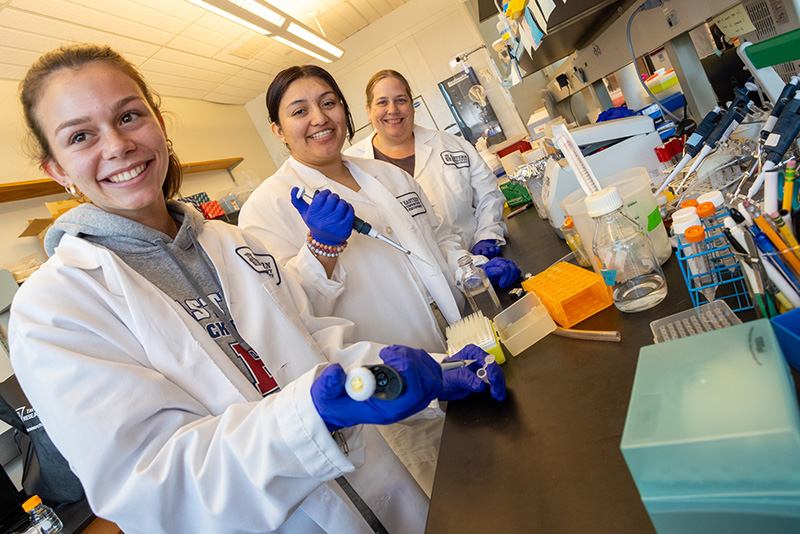- Apply
- Visit
- Request Info
- Give
Biologists find new signs of gene expression in model worm
The worm’s gene expression may have implications for human conditions
Written by Lucinda Weiss
Published on September 27, 2023

In research recently published in the online scientific journal “microPublication Biology,” Eastern Connecticut State University biology professor Amy Groth and her former undergraduate research assistant, Elizabeth (Del Buono) Charnysh ’17, found new signs of genetic expression in a widely studied microscopic worm, C. elegans.
Along with two co-authors from the University of Santa Barbara, who provided the worm strain used in the study, they hypothesized that the odd-2 gene in C. elegans may be expressed in rectal gland cells and, possibly, in the worm’s germline sheath cells. Previously, odd-2 genes had been found to be expressed in the worm’s intestine.

Thousands of scientists study C. elegans, a worm found in the soil, because it is a model organism in genetics and “is still quite related to us,” Groth said, even though the body of the worm has only about 1,000 cells. Few study the odd-2 gene in C. elegans, however; the most recent paper before theirs on odd-2 was published in 2004.
Humans and the worm share versions of the same genes. In humans, the corresponding genes are involved in the development of the heart, kidneys and lungs, for example, and if they mutate, are involved in cancer.
In the worm, Groth studies transcription factors, which control which genes are expressed and in which tissues. In humans, the equivalents of the worm’s odd-skipped genes are known to be involved in ovarian cancer and in fertility in humans. Finding expression of odd-2 in the worm’s germline sheath cells, the outside of its reproductive cells, could mean that the gene plays a role in reproduction in worms also, she noted.
Charnysh, now a clinical research project manager at The Jackson Laboratory for Genomic Medicine in Farmington, became involved in research with Groth when she was a sophomore at Eastern. “Undergraduate research allowed me to stay abreast of my topic of interest (genetics) for multiple years instead of learning ending at the conclusion of the course,” she said.
Charnysh won a Barnard Award at Eastern in 2017 and went on to earn a master’s degree in human genetics at Sarah Lawrence College. She worked as a genetic counselor at Yale-New Haven Health before joining the Jackson Lab in early 2023, where she contributes to research projects regarding the ethical, legal and social implications of genetic testing.
“Dr. Groth was a wonderful professor who challenged me; her teaching methods made it fun and interesting, and this caused me to develop a high level of interest in genetics,” she said. “I was a first-generation college student and having this connection to her gave me the boost I needed to be successful applying to graduate school.”



